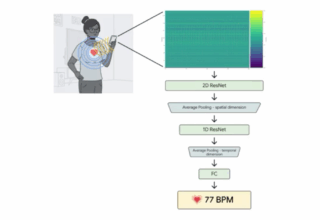
HTC’s One M9 is certainly a posh-looking device, though it’s hard to ignore the fact that it’s not much of a departure from last year’s One M8.
That’s not necessarily a bad thing, but I was curious as to why HTC is taking this approach. I asked Claude Zellweger, HTC’s vice president of industrial design, to explain why the company didn’t take bigger risks with its flagship this year. Zellweger walked me through the design process and all the thinking that went behind the One M9. After a while, the company’s design approach started to make sense.
Greenbot: Let’s start with a question that’s been on everyone’s minds: Why did you stick with an iterative design for the One M9?
Zellweger: We felt really strongly that good things evolve and mature. It’s really important for us to build a level of trust with our brand by offering a design that is in some ways evolutionary—something that has a lot of pillars that consumers can trust on and rely on, year over year.
It’s not something we’re using as an excuse—it’s something very deliberate. If you look at Porsche, the 911 has evolved over a generation. It’s incremental. Really, what we focused on, is making things that are already good about the One even better, and focusing on reducing things that are not already important.
Greenbot: Can you offer an example of the type of design elements that are considered unimportant?
Zellweger: We reduced the number of parts on [the One M9]. If you look, there are fewer parts, which then translates very directly into a phone that’s smoother to hold, less creaky, and feels like one continuous product. That said, what’s important for us to think of new processes to make us stand out. No one’s done as much as we have with as much metal on the phone.
Greenbot: You mentioned earlier that the One design has “a lot of pillars” you want consumers to rely on in the future. What exactly are those?
Zellweger: One of the pillars is that [the One M9] is human. We’ve always liked this idea that you have a product that feels really good in the hands. That’s why that big curvature you have on the back of the product has really been a trademark of ours.
If you look at the first generation of the One, that had really sharp edges. Then, the M8 was very soft and people loved the feel of it, but it was almost a little too slippery. So, with the M9 this year, we took both of those elements so that it feels good in the hand, and you get a little bit of grip on the side.
Some of the other pillars are about removing anything that’s distracting from the consumption of the content. It’s really about the craft of being able to produce a metal phone that is elegantly made.
Greenbot: What elements of phone design do you consider distracting?
Zellweger: An overly ornate design. For instance, we would not put trim pieces where we don’t need them around the camera lens. We want to make sure you don’t have a lot of extra parts. That’s why I was saying earlier that our front bezel is one single part—when you look at the design it becomes all about what’s on screen.
Greenbot: Does any of that make it easier to manufacture a phone?
Zellweger: Imagine you pick up a pebble on the beach—it’s really smooth and you don’t have any interruptions. This is the kind of philosophy that we’ve taken with our phones. The unibody housing is made with one solid piece of metal. The plastic antenna cuts that you see prominently on the back, those are treated like a pebble; they’re modeled into the metal so that you don’t feel that part break at all. And the same goes as you go around the phone. On the front of the phone, you have one single bezel that connects the top speaker, the bottom speaker, and the side, so when you run your nails and fingers over it, you have fewer bumps to get stuck in. It’s just a very smooth experience.
In the end, it has nothing to do with cost reduction—quite the contrary, we go through a lot of trouble to make the product more simple, and sometimes that costs more.
Greenbot: You really rallied with that pebble analogy. Is that the inspiration behind the One M9? Are there other real life inspirations?
Zellweger: I would say [the pebble analogy works] for the construction of it, but otherwise, it’s not pebble-like—we adhere to the bauhaus minimalist principals, though it’s a mix. I don’t believe in an unflinching minimalism. I believe in a very simple approach. If you look at the product, it’s a simple square with rounded rectangles, and really carefully proportional radii. But then we want to bring that human element, the emotional element, and for us it’s that back curvature. That’s the part that you connect with when you hold the product in hand for hours and hours a day.
Greenbot: You said that looking at the way people use their phones really inspires the way you design products. Can you share some of those observations?
Zellweger: Over the years, a lot of the innovations we’ve made stem from observation. What we introduced last year—like double-tapping the screen to turn it on—had a lot to do with the way people strain their fingers to hit the buttons on the side. We think that most of the time people would not use the power button because it’s more convenient to double tap the screen.
Greenbot: Can you touch upon some of the challenges you faced in designing the One M9?
Zellweger: One of the main challenges in terms of hardware was the added complexity of the dual process. The machine time on the main unibody is almost twice as much as the very first One M7; that makes the cost a lot higher, so we also had to find a lot of smart ways in terms of engineering to bring that cost back down again. The complexity of that process also means you get a lower yield rate, so there are more parts that get rejected. Once you anodize, and you make a small mistake, you basically have to start over.
Greenbot: Can you offer an example of one thing you absolutely had to change from the One M8 to the One M9?
Zellweger: One of the things that is most noticeable is that we focused back to just one camera module. In the M8 we had the duo cam, but we wanted to get back to the basics on the camera and really make sure the primary camera was the best it can be, so we introduced a bigger camera sensor. That also leads to having a more prominent camera feature on the back, just physically, though we do think that was the right decision
[“source-greenbot.com”]














